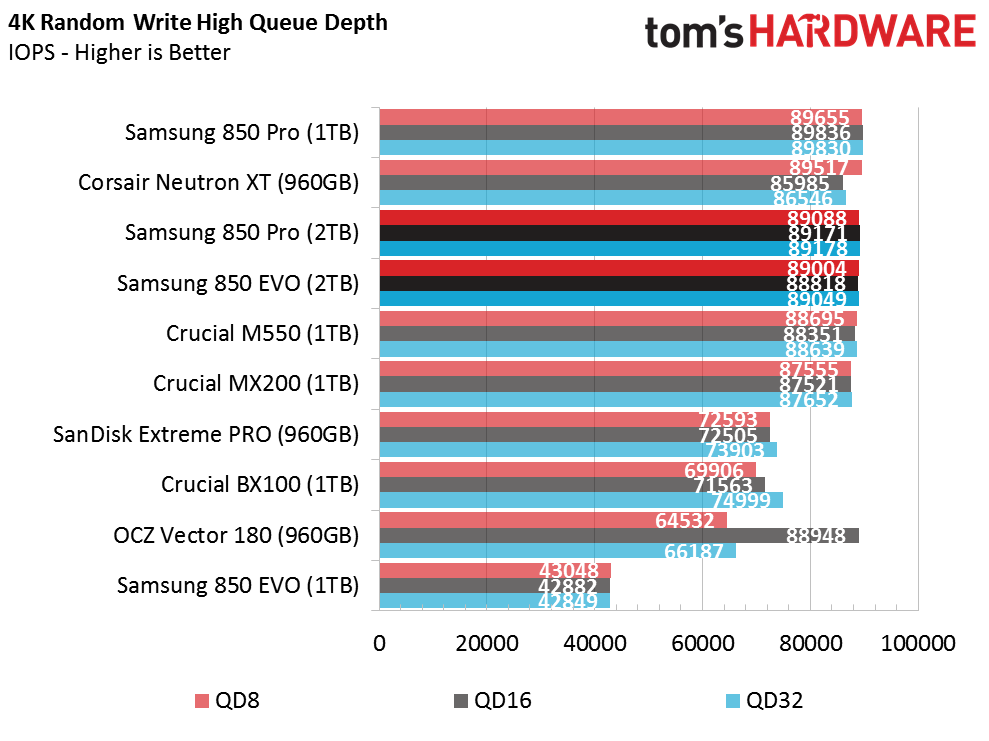Samsung 850 EVO And 850 Pro 2TB SSD Review
Samsung is updating its SATA SSD product line by adding new 2TB options to the 850 Pro and 850 Evo families. Are they any better than the existing models?
Why you can trust Tom's Hardware
Random Write



The new 2TB drives fall in the middle of the pack when it comes to random writes. At high queue depths, we see how the 850 EVO 2TB delivers better random write performance than the 1TB model.
This test doesn't take the drives down to enterprise-class steady state, but it does involve heavy preconditioning that doesn't doesn't affect the 2TB model like it does Samsung's 1TB 850 EVO.
Get Tom's Hardware's best news and in-depth reviews, straight to your inbox.

Chris Ramseyer was a senior contributing editor for Tom's Hardware. He tested and reviewed consumer storage.